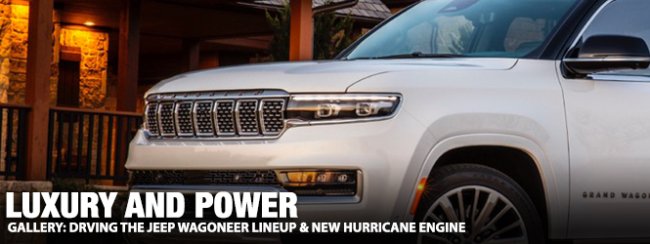
I was recently invited to travel to Bozeman, Montana to drive the 2023 Jeep Wagoneer and Grand Wagoneer in their new long wheelbase form. While this gave us a chance to experience larger examples of the range-topping SUV, this was also our first chance to drive anything with the new Hurricane inline-six engine family.
In the case of the Wagoneer, that includes the Hurricane Twin Turbo 3.0-liter inline-six with 420 horsepower while the Grand Wagoneer’s Hurricane Twin Turbo 510 features a similar displacement and forced induction layout, but as the name suggests, it delivers 510 horsepower.
These engines have been introduced to effectively replace the 5.7-liter Hemi in the Jeep Wagoneer and the 6.4-liter Hemi in the Grand Wagoneer. The V8 engines are still standard in the base model Wagoneer and Grand Wagoneer, while the 6.4-liter Hemi is option in Grand Wagoneer Obsidian models, but the new inline-six engines offer more power and better fuel economy than the available V8 engines.
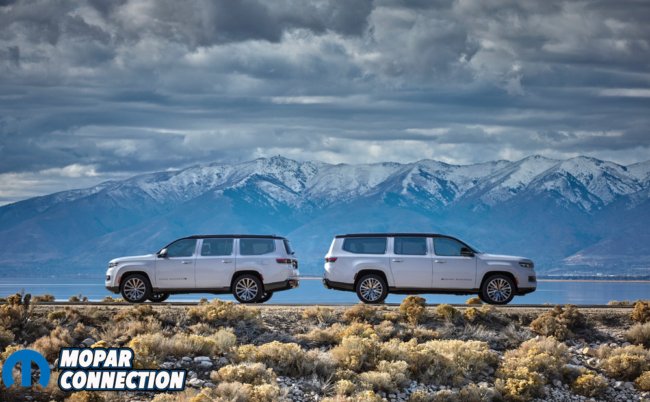
In theory, most buyers will prefer the Hurricane engines due to the fact that they deliver more power and better fuel economy, but smaller forced induction engines general have a very different feel than a V8. As a lover of the Hemi V8, I was curious to see if the Hurricane engines provide the driving dynamics that most Jeep owners have come to expect thanks to the Hemi engines.
There is no question that the Hemi engines sound better and the twin turbo Hurricane engines are heavily muffled to make as little noise as possible, but when it comes to power delivery, these new engines are pretty impressive.
The Jeep Wagoneer L and Grand Wagoneer L were introduced earlier this year as long wheelbase versions of the popular large SUVs. Both of the L models are 12 inches longer overall, with 7 of those inches being between the wheels. As a result, there is more leg room and the second and third rows of seating, along with more storage space behind in the rear.
As you might expect, with more space in the second row, third row and rear cargo area, when the seats are folded flat, the Wagoneer and Grand Wagoneer L offer gobs of space – rivaling that of large trucks with a cap.
In addition to the added interior space, the extra wheelbase length leads to new rear doors and roomier rear door entryways, free of the intrusion of the rear wheelwells. That makes it easier to load people and cargo in and out of the rear of the vehicle, but nothing changed forward of the B pillar. That means that nothing changed with the driver’s seat or the area around it, but that is just fine. There is still a ton of space for the driver and front passenger in every direction, with all of the standard luxury that you would expect from the range-topping Jeeps.
The new Wagoneer L and Grand Wagoneer L are mechanically identical to the original, shorter wheelbase models, with the exception of the retuned suspension setups and the new Hurricane engines. In fact, the off-road portion of the event had us driving Wagoneer short wheelbase models with the twin turbocharged I6, and the driving dynamics between the two wheelbase options are remarkably similar.
Of course, I have also driven the original Wagoneer and Grand Wagoneer with the short wheelbase and the Hemi engines, both on location and at home. The engineers have done a great job of adding length (and weight) to the Wagoneer and Grand Wagoneer lineup without creating SUVs that feel bigger and heavier.
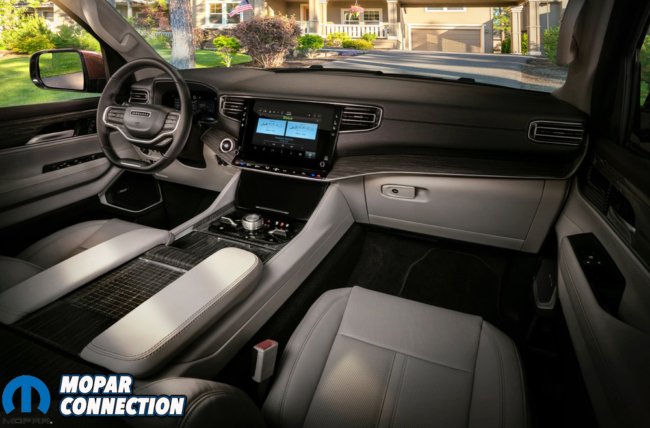
On both the open road, cruising down Montana highways, and when weaving through a crowded parking lot, the new Wagoneer L and Grand Wagoneer L are just as stable and as controlled as the smaller Wagoneer models or the big SUVs from the competition. If you like how the Wagoneer or Grand Wagoneer handle and ride, but you needed more interior space, the L models should fit the bill perfectly.
As mentioned above, the two new Hurricane I6 engines offer better power and more miles per gallon than the Hemi V8 engines that were standard for 2022. The Wagoneer’s 5.7-liter Hemi offers 392 horsepower and 404 lb-ft of torque while the Grand Wagoneer’s 6.4-liter Hemi packs 471 horsepower and 455 lb-ft of torque.

For comparison, the Hurricane Twin Turbo in the Wagoneer offers 420 horsepower and 468 lb-ft of torque while the Hurricane Twin Turbo 510 delivers 510 horsepower and 500 lb-ft of torque. Those numbers all represent major increases in every metric over the comparable Hemi V8 engines, but these new engines are also more fuel-friendly.
The Hurricane in the Wagoneer gets a mile-per-gallon better around town and on the highway while the Hurricane 510 gets one mile-per-gallon better around town and two miles-per-gallon on the highway. Those aren’t huge numbers, but when coupled with the added power across the board, the Hurricane engines will appeal to most buyers.
The key “issue” in most cases when comparing a naturally aspirated V8 to a turbocharged smaller engine is that the big engines provide much more initial torque right at the point where you are asking for that power. The forced induction engines – particularly smaller engines – rely on boost pressure to make big power and making that boost takes a second.
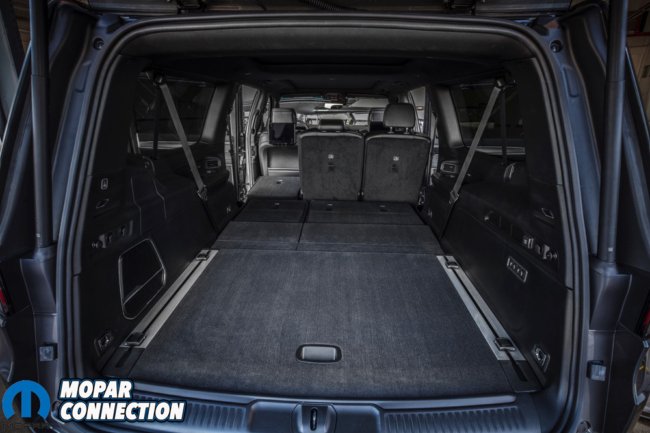
The period of time needed to reach peak boost pressure and peak output it called “boost lag” and for many moons, it was a major issue for small, forced induction engines. Fortunately, through advancements in engine technology, boost lag has been all-but-eliminated and that is evident in the Wagoneer and Grand Wagoneer.
When you stomp the throttle from a stop, the Hemi engines provide a sharper and stronger initial hit, while the Hurricane engines take just a second for the turbochargers to get spinning. This gives the Hemi-powered models an advantage, but that advantage is very brief. Within a second of the hard launch, the boost in the Hurricane engines has climbed to the levels needed to make more horsepower and torque than the V8s, leading to noticeably stronger acceleration times from a stop.
When rolling along, when you ask for lots of power at once – as in when passing a slower moving vehicle on a narrow Montana road – the Hurricane I6 engines provide more mid-range motivation than the Hemis without any hint of lag. In the time it takes the 8-speed engine to downshift, the boost is up and the inline engines are making far more torque than is offered by the V8 engines.
The only downside to the Hurricane engines is the lack of V8 sound and frankly, I imagine that many Wagoneer and Grand Wagoneer buyers won’t care about that. The Hurricane engines are so quiet that even when driving on the desolate country roads of Montana, you can only hear the I6 when you are under hard throttle.
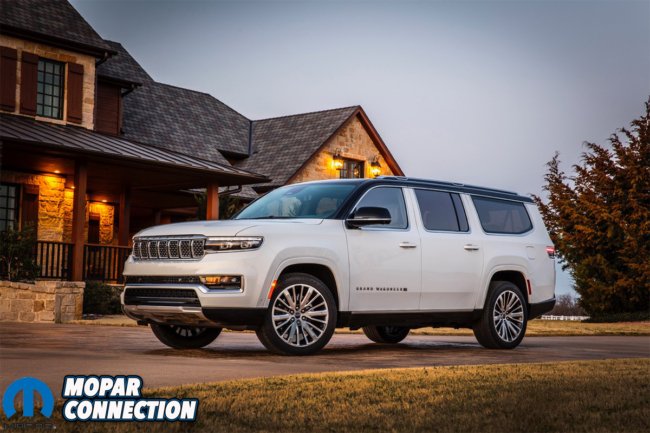
In closing, my thoughts on the Wagoneer L and Grand Wagoneer L with the Hurricane engines are similar to my initial thoughts on the short wheelbase Wagoneer and Grand Wagoneer. The added power of the Grand Wagoneer makes it the more enjoyable vehicle, so anyone who is shopping for a big Jeep should opt for a model with the Hurricane Twin Turbo 510. Sure, the Grand Wagoneer costs quite a bit more than the Wagoneer, but the step up in interior luxury coupled with the extra twin turbocharged power makes the “Grand” well worth the added expense.
As for the L, anyone who needs or wants more interior space in either the Wagoneer or Grand Wagoneer should opt for the added wheelbase with confidence that there really isn’t any downside to the larger models. Again, they cost a bit more, but for anyone who needs the extra interior space, it is worth every cent.











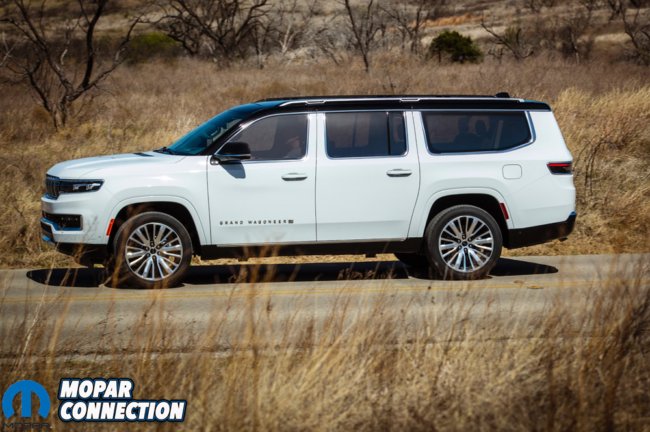




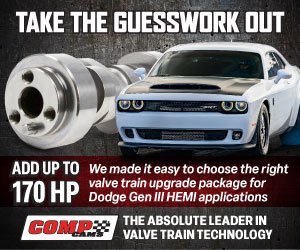
 Mopar Connection Magazine – The ONLY Daily Mopar Magazine © 2022. All Rights Reserved. Mopar Connection Magazine is the ONLY daily Mopar Magazine bringing you the latest Mopar news, technology, breaking news, and Mopar related events and articles. Find out the latest information about Mopar, Mopar products and services, stay up to date on Mopar enthusiast news, dealership information and the latest Mopar social media buzz! Sign up for the Mopar Connection Magazine newsletter for the latest information about new products, services and industry chatter. Mopar Connection Magazine is the best and only source you need to be a Mopar industry insider!
Mopar Connection Magazine – The ONLY Daily Mopar Magazine © 2022. All Rights Reserved. Mopar Connection Magazine is the ONLY daily Mopar Magazine bringing you the latest Mopar news, technology, breaking news, and Mopar related events and articles. Find out the latest information about Mopar, Mopar products and services, stay up to date on Mopar enthusiast news, dealership information and the latest Mopar social media buzz! Sign up for the Mopar Connection Magazine newsletter for the latest information about new products, services and industry chatter. Mopar Connection Magazine is the best and only source you need to be a Mopar industry insider! by
by